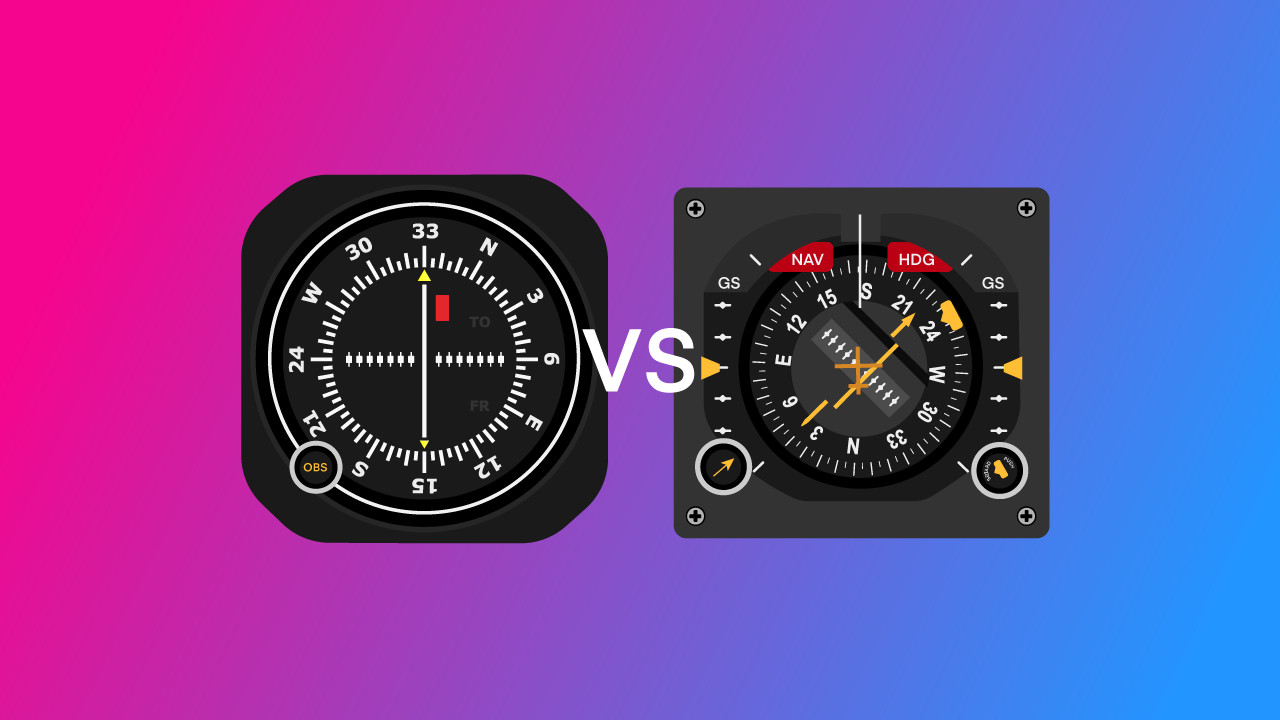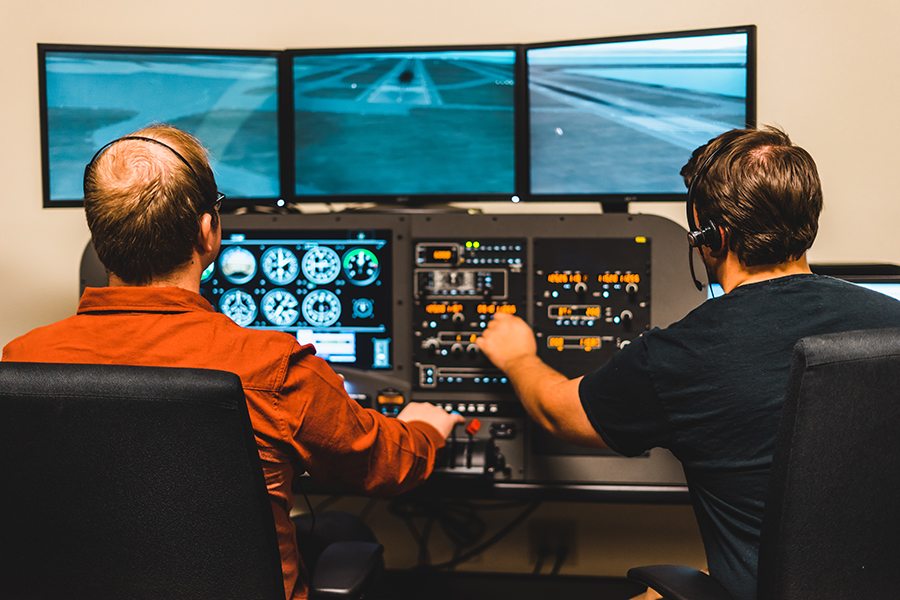-
Key Takeaways
-
What’s the Difference between the HSI and CDI?
- The CDI Instrument
- The HSI Instrument
-
Using the Correct Terminology
-
But Wait, There’s More (to the HSI)
-
The Future of the HSI
- Enhanced Display Capabilities
- Integration with Advanced Navigation Systems
- Customization and User Preferences
- Automation and AI Assistance
-
Frequently Asked Questions
-
Conclusion
The Horizontal Situation Indicator (HSI) and the Course Deviation Indicator (CDI) are both crucial to effective navigation.
But there’s a slight problem.
You may unknowingly be misusing the terms!
Let’s dive into the difference between HSI and CDI and how to use them correctly.
Key Takeaways
- CDI shows course deviation; HSI combines CDI with a heading indicator.
- On an HSI, the CDI is the center of the needle; the course needle sets the course.
- HSI reduces workload by providing more navigation info in one display.
- Glass cockpit HSIs integrate maps, weather, and traffic for better situational awareness.
What’s the Difference between the HSI and CDI?
The confusion between the HSI and CDI is mainly due to the fact that the CDI is a standalone instrument, while the HSI combines the CDI and heading indicator into one.
In other words, the CDI is a simple instrument that only shows course deviation, while the HSI is a more advanced instrument that combines a CDI with a heading indicator.
Let’s explain.
The CDI Instrument
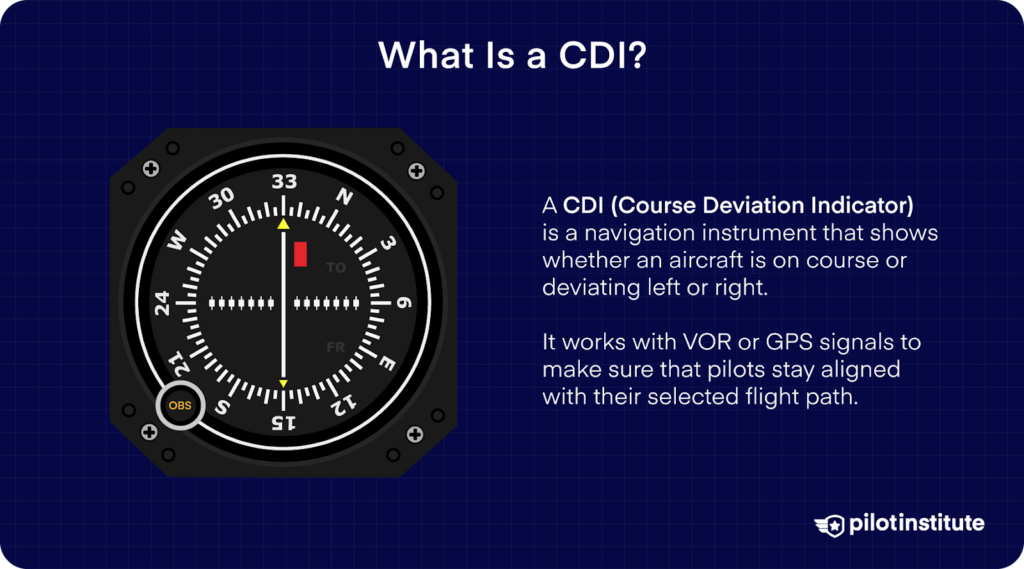
The Course Deviation Indicator (CDI) is an instrument that helps pilots determine whether they’re on course. Imagine you’re following a straight line from one point to another. The CDI shows you if you’re to the left or right of that line (or if you’re right on it).
It’s like a simple guidance system. You can use the CDI with navigation aids like VOR (VHF Omnidirectional Range) or GPS.
The HSI Instrument
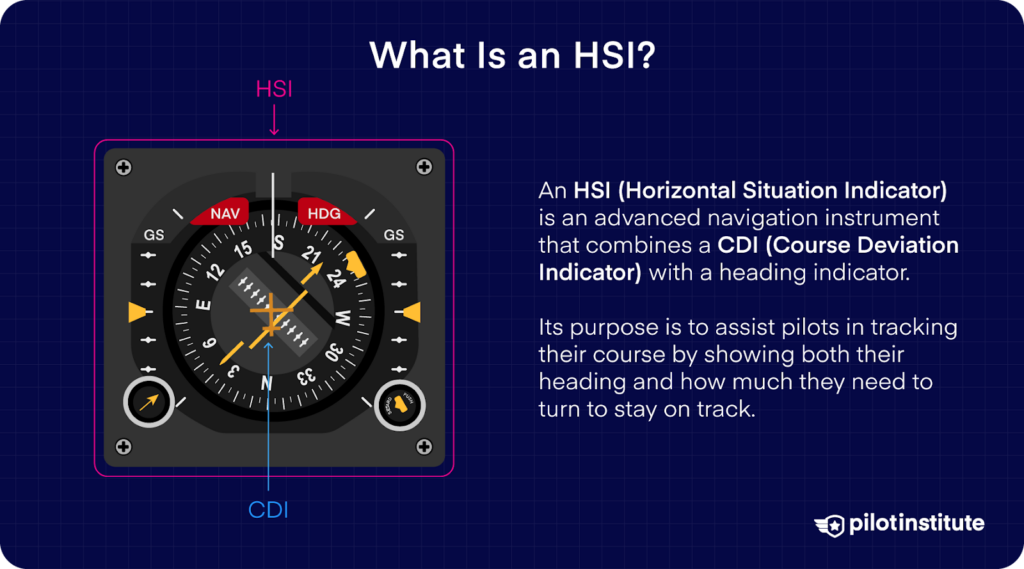
The Horizontal Situation Indicator (HSI) is a more advanced version of the CDI.
It combines the functions of a CDI with a heading indicator, giving you more information in one place. It shows your current heading and how much you need to turn to get on the course.
The HSI can also work with different navigation aids, just as the CDI instrument does.
The most confusion occurs when terminology is used to describe the elements of the HSI.
First off, the CDI, when integrated into the HSI, is technically only the middle part of the needle that moves side to side. In other words, the movable rectangle in the center of the needle tells us our course deviation (the Course Deviation Indicator).
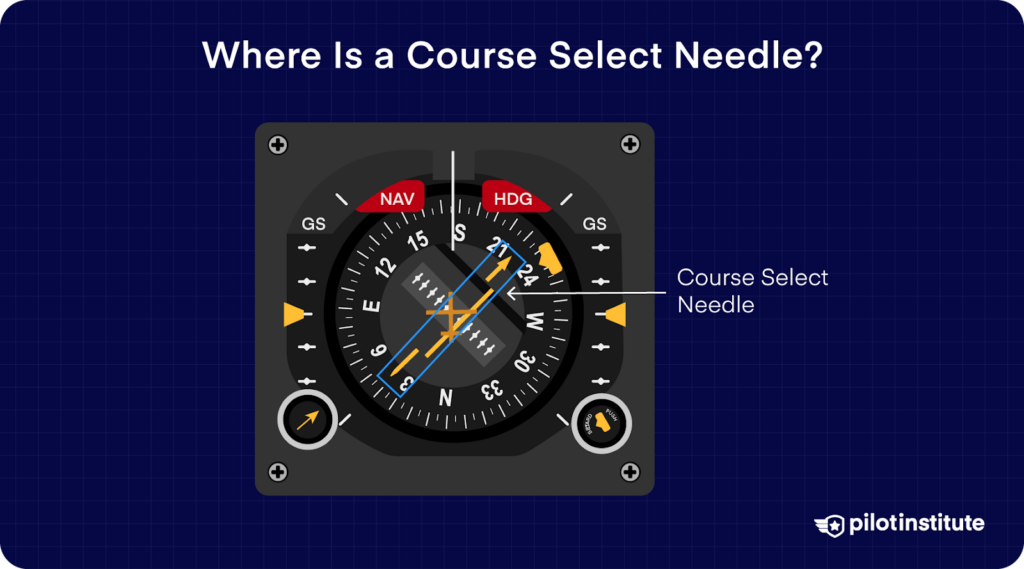
The entire needle is our “course select needle” (or “course needle”) because we use it to select our course (what a surprise!).
Using the Correct Terminology
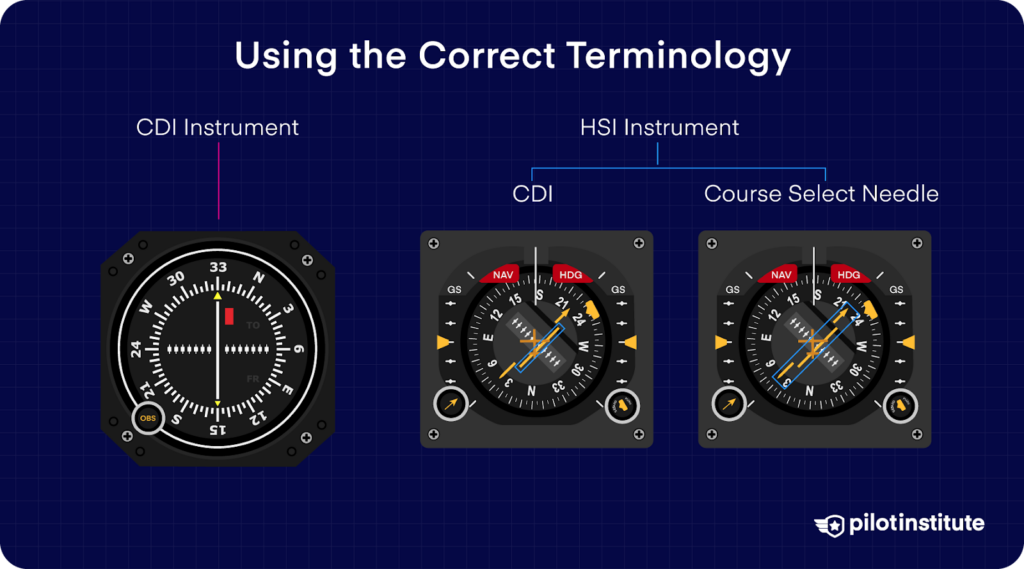
Alight, there are a lot of terms and acronyms flying around, so let’s summarize them all before we dive into how to use them in real life.
- HSI: The instrument that combines the heading indicator and CDI instrument.
- CDI: A standalone instrument or the part of the HSI that indicates course deviation (the middle of the needle).
- Course select needle (course needle): The part of the HSI containing the CDI that we use to select a specific course.
Let’s look at an example of these terms in action. We won’t explain technical details, so you may not understand the example if you haven’t used a VOR.
Imagine we’re flying an HSI-equipped airplane away from VOR.
Let’s say you want to intercept radial 360 outbound. In this case, you need your first officer to set the course needle to 360.
What would you say to them?
“Set course 360 (three-six-zero).”
Easy!
What if they’re flying a little off course, and you need them to correct their flight path (using the CDI)?
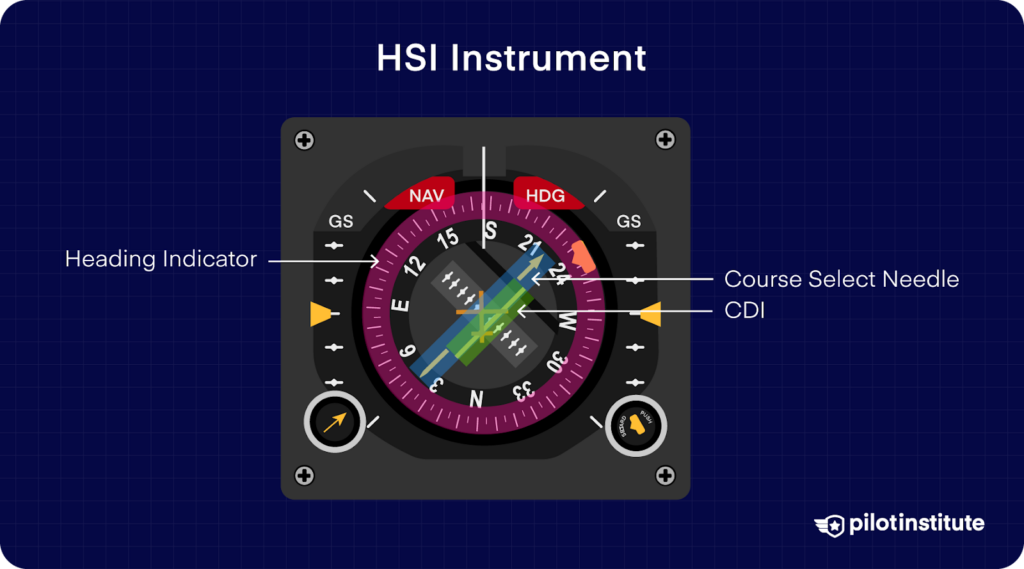
“Check CDI.”
Notice how you’re telling them to check the CDI – because it is part of the HSI.
If you said, “Check HSI,” that would be confusing. Which part of the HSI? The heading, the selected course, or the course deviation (CDI)?
Is that making more sense now?
But Wait, There’s More (to the HSI)
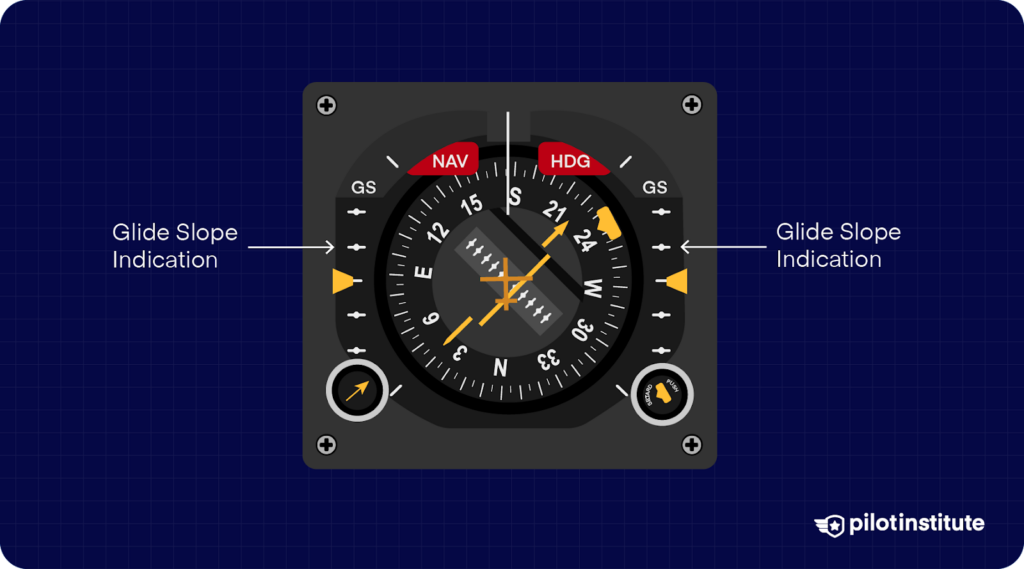
The beauty of the HSI lies in its ability to provide a wealth of information in one instrument.
Up to now, we’ve only discussed the CDI and heading indicator combination, but the HSI can do much more.
In traditional analog-gauge aircraft, you’ll often find the HSI equipped with ILS capabilities, too. In other words, the HSI can display localizer (left/right) and glideslope (up/down) deviation.
The HSI can also provide vertical navigation capabilities with vertical navigation (VNAV) capable GPS. This means that you can tell the GPS that you want to be at a certain altitude at a specific location, and the GPS will work out when and how quickly you need to descend to get there.
Then, you simply follow the HSI’s instructions.
This is great from a pilot’s perspective. Now, we can fly more accurately while reducing our workload and also fly an ILS or GPS approach without using a separate ILS instrument.
The only issue with the HSI so far is that it is limited by its physical design.
The range of information we can display on the HSI is limited by the number and type of deviation indicators (e.g., CDI and VNAV).
We also don’t have much space for other indicators without the HSI turning into a confusing mess of needles that we don’t need at the moment, pointing in directions that we don’t want to go.
But what if the HSI could change the way it looked depending on what we need to see?
The Future of the HSI
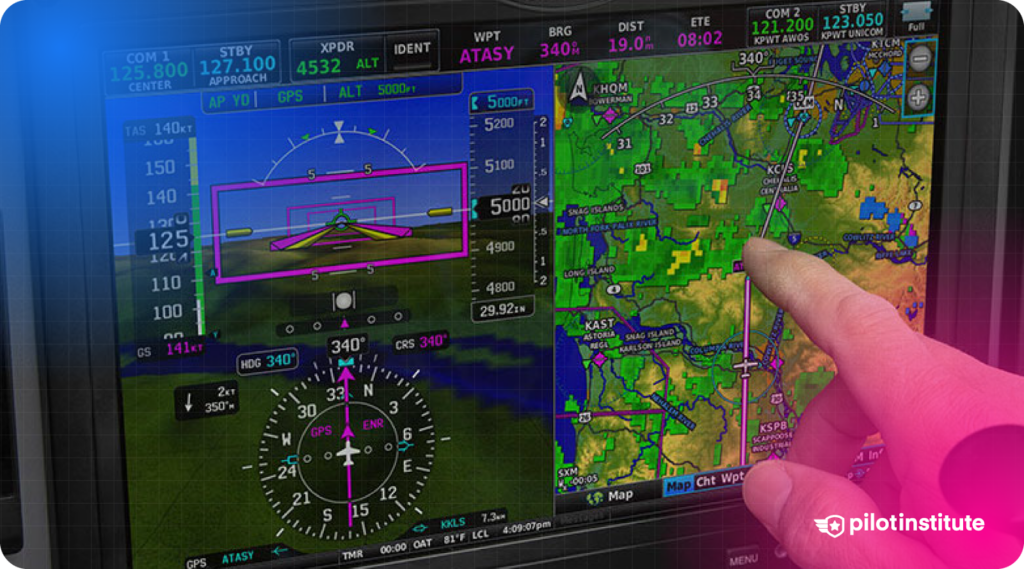
As aviation technology advances, the HSI remains a valuable instrument while maintaining strong roots in its basic navigation principles.
The HSI has found its home in modern glass cockpit avionics, along with the altimeter and airspeed indicator.
Glass cockpits are digital flight instrument systems that replace traditional analog dials and gauges with digital displays. This makes the cockpit environment more organized, user-friendly, and efficient.
The HSI evolved alongside these glass cockpit systems and has had quite the facelift compared to its airspeed and altimeter counterparts.
Enhanced Display Capabilities
In glass cockpit avionics, the HSI benefits from improved display capabilities. High-resolution screens provide pilots with clearer and more detailed information.
As a result, the HSI can display more accurate and easy-to-understand visual representations of an aircraft’s position and course.
Think of the ability to provide heading and course information next to the HSI in a number format. On a traditional HSI, you have to make an educated guess about whether you are maintaining.
For example, heading 120 or 121 – the difference would be tough to see. A digital HSI takes a lot of the guesswork out of reading the HSI, which makes your flying more accurate.
But the digital HSI isn’t limited to basic information.
Integration with Advanced Navigation Systems
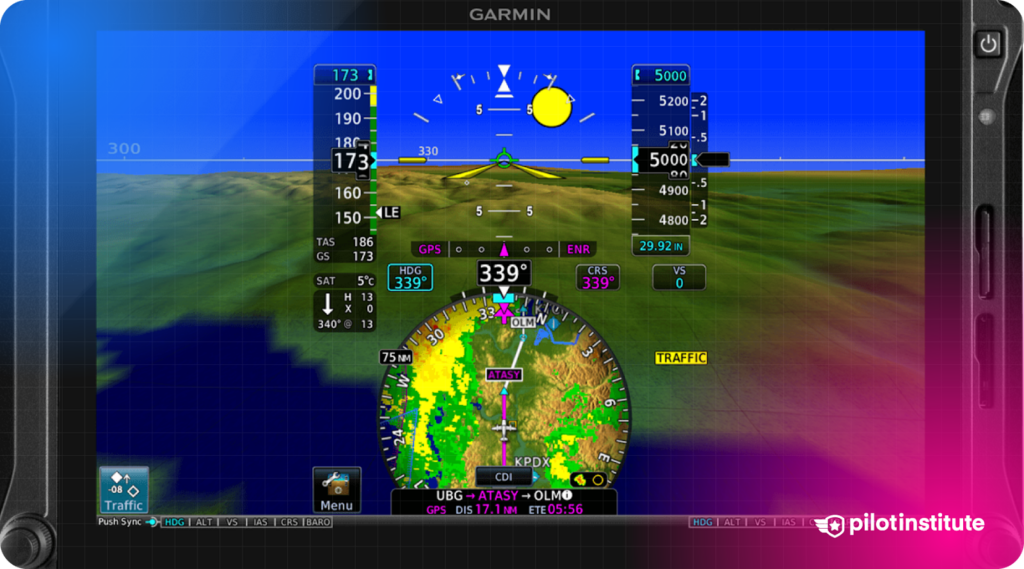
The HSI has evolved to display information in various ways that offer pilots a comprehensive view of their surroundings. The HSI transforms into a more sophisticated and versatile tool by integrating with maps, weather, terrain, and traffic information.
Modern HSIs can now overlay an aircraft’s position and course directly onto digital maps. This allows pilots to see their location in relation to geographic landmarks, airspace boundaries, and navigational aids.
With this comprehensive view, pilots can easily plan and execute their flights while maintaining situational awareness.
Incorporating real-time weather data into the HSI is another innovation that helps with pilot decision-making.
By displaying weather information such as precipitation, storm cells, and turbulence directly on the HSI, pilots can easily monitor changing conditions and make better choices to avoid adverse weather.
Integrating terrain and traffic awareness features into the HSI also significantly improves flight safety, especially when flying in mountainous regions or during low visibility conditions.
Traffic information is particularly useful, as pilots can perform maneuvers to stay clear of conflicting traffic while focusing on the primary instruments.
Customization and User Preferences
With the integration of the HSI into glass cockpit avionics, pilots can also customize the display according to their preferences.
They can choose which data to display and adjust the size and layout of the instruments according to their phase of flight.
This level of personalization will make it easier for pilots to keep their information relevant and concise.
Automation and AI Assistance
The HSI may eventually be integrated with artificial intelligence (AI) systems to provide pilots with additional decision-making support.
AI assistance could help pilots interpret HSI data, suggest course corrections, and even predict potential hazards.
While many of these features will likely integrate into larger map-based displays, integrating this technology into the HSI will allow pilots to stay focused on their flight instruments.
Frequently Asked Questions
- Q: Is HSI or CDI better?
A: An HSI is usually considered better because it combines a CDI with a heading indicator. However, a CDI is simpler and still very effective for flight navigation. - Q: What is the difference between a VOR and a HSI?
A: A VOR is a ground-based navigation system. An HSI is an aircraft instrument that displays VOR guidance along with heading information.
Conclusion
Now you’ll never use the terms “HSI” and “CDI” incorrectly ever again.
You know what else is also commonly misunderstood? Airport signs! Check out our Essential Guide to Runway Signs to make sure you can read them without confusion, too.
